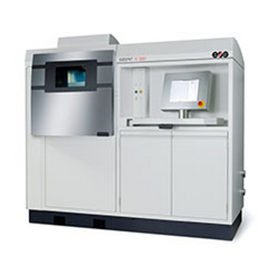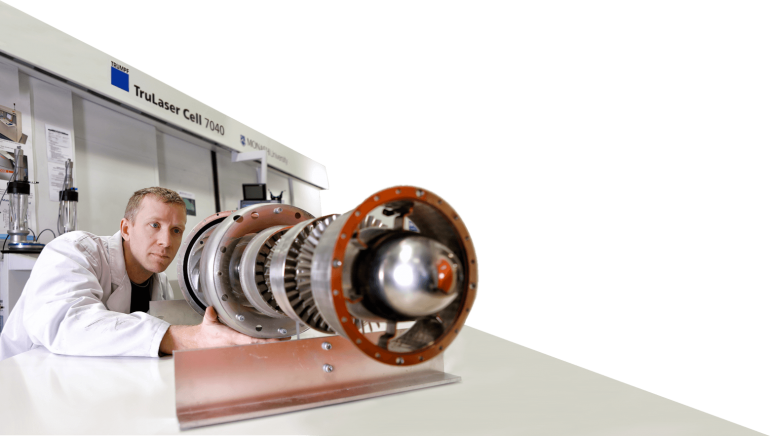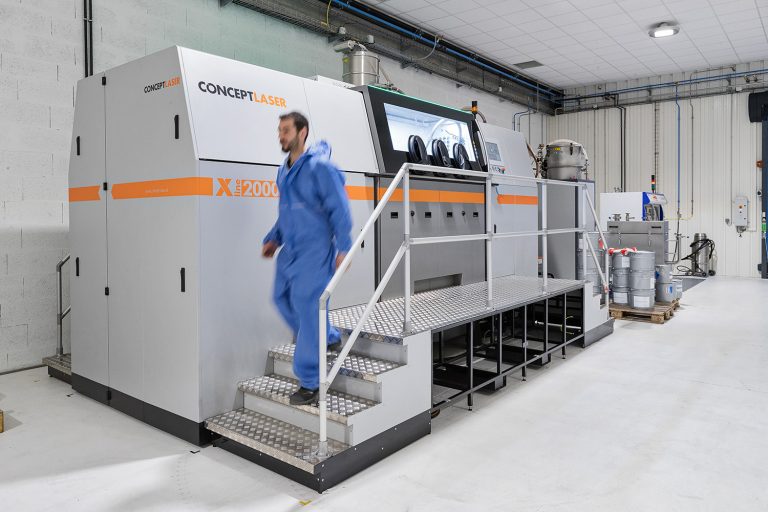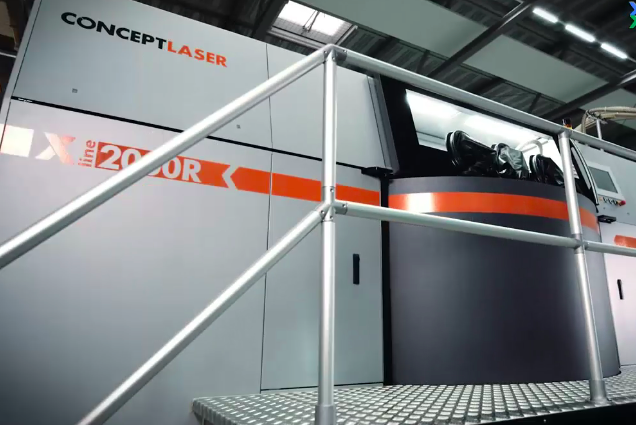

The Concept Laser M Line system’s modular machine technology physically decouples the Laser Processing System (LPS) and Material Handling Station (MHS) units used for upstream and downstream stages of the production process and part production.īecause of the modular architecture, these tasks can now be completed in parallel and physically separate from one another.Ĭontinuous improvement and input from GE Aviation informed the most critical and fundamental change to the system – a 54 percent increase in the build envelope to 500mm x 500mm x 400mm – to allow GE Aviation to progress to serial production of larger additive parts. Using 3D printing technology on this type of part offers a number of advantages, including 22% weight savings, a decrease in the production schedule of around one or two months, about 30% cost savings, and higher performance.Īn antenna support of this type is already in orbit since April 2015 on the TurkmenAlem satellite also built by Thales Alenia Space.Above: GE Additive Concept Laser M Line System/Image Source: GE Additive These two parts, featuring an innovative bio-design, have just passed their vibration acceptance tests, demonstrating perfectly reproducible dynamic behavior.

Thales Alenia Space uses the Concept Laser Xline 1000R 3D printer, the largest laser beam melting machine in Europe, belonging to Poly-Shape, a French company and partner of Thales Alenia Space. The parts for the two satellites are identical and were made in the same batch by the same machine. Measuring some 45cm by 40cm by 21cm, these telemetry and command antenna supports are made of aluminum.

Quote Cannes, Octo– The Koreasat 5A and Koreasat 7 telecommunications satellites currently under construction by Thales Alenia Space will include the largest spacecraft parts ever made in Europe using a 3D printing technique called the “powder bed additive manufacturing process”. Through this new contract, we are delighted to support the development of large-scale space programs in South Korea, and in Asia in general." "KT Sat is a long-standing customer, for whom we already built the Koreasat-5 and Koreasat-6 satellites. "I would like to express my warm thanks to KT Sat for choosing us to build these two new telecommunications satellites," said Jean-Loïc Galle, President and CEO of Thales Alenia Space. Koreasat-7 will be positioned at 116° East and Koreasat-5A at 113° East. Each satellite will weigh about 3,500 kg at launch and will offer payload power of about 7 kW. Koreasat-7's coverage zone encompasses Korea, the Philippines, Indonesia and India, while Koreasat-5A will cover Korea, Japan, Indochina and the Middle East. Koreasat-5A will carry Ku-band transponders. It will also take charge of the launch campaigns, the launch and early operations phase (LEOP) and in-orbit tests (IOT).īuilt on the Upgraded Spacebus 4000B2 platform from Thales Alenia Space, Koreasat-7 will be fitted with Ku-band transponders and Ka-band transponders.

The two satellites will provide Internet access, multimedia, broadcasting and fixed communications services.Īs program prime contractor, Thales Alenia Space is in charge of the design, production, testing and On Ground Delivery (OGD) of the satellites. Quote Cannes, May 12th, 2014 – Thales Alenia Space announced today that it has signed a contract with the Korean satellite service operator KT Sat, subsidiary of KT Corporation, to build two telecommunications satellites, Koreasat-7 and Koreasat-5A, winning the contract against an international field of competitors.


 0 kommentar(er)
0 kommentar(er)
